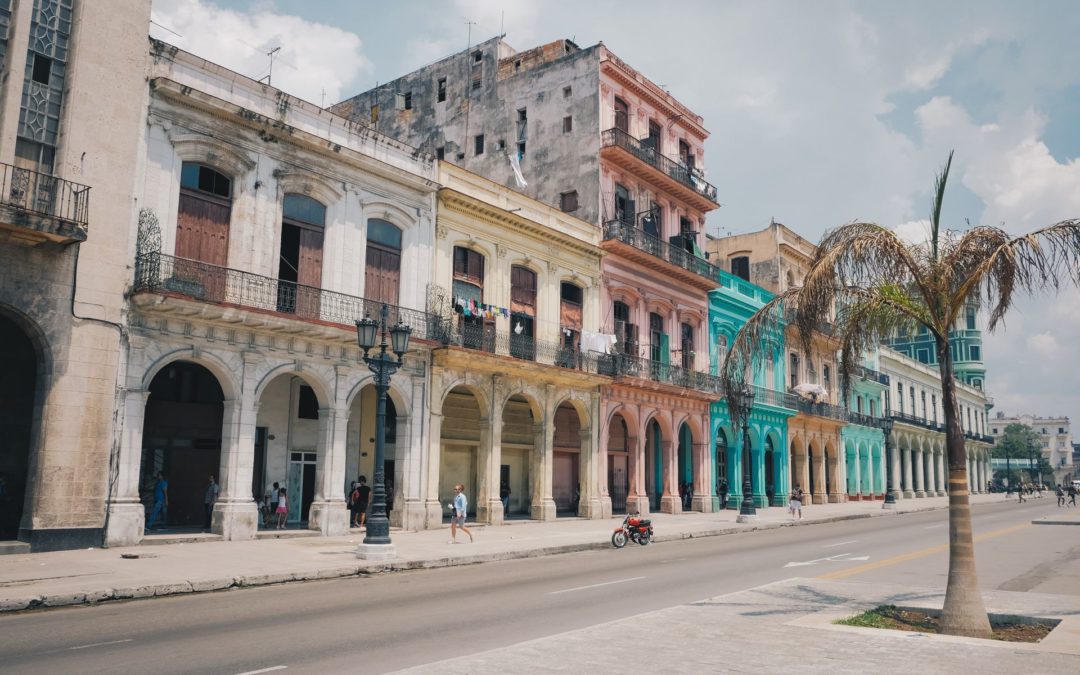The very idea of Cuba inspires authenticity. If one closes their eyes, images of brightly colored 1950s shine in the sun. There are fat torpedo cigars and tall glasses of mojitos gleaming with condensation as well. Maybe “Chan Chan” is playing in the background and the smell of pungent cumin going into Black Bean soup. But to find a real authentic Cuba, one has to leave Old Havana and explore more than just the plazas viejas; or sun-bleached beaches of Varedaro and humid beautiful limestone mountains of Viñales.
The best way to see the long country of Cuba is through its main artery, the Carretera Centrale which spans the length of the country and in turn becomes the lifeline of the traveler too. Most citizens don’t have a car or even the funds for the bus or an unreliable train, so the government set up ‘puntos amarillos’ at the ends of the towns and relies on a universal transportation system – ordinary drivers.
 In order to get from place to place you don’t even need a thumb stuck out to find a ride. The yellow buildings and shelters provide the signal themselves. Drivers are required to stop for passengers and at busier roadways. There are sometimes officers who help insist everyone get a ride. The transports usually end up being backs of trucks – either open faced beds that would just as easily carry supplies as people or revamped lorries covered in a tarpaulin that have been converted into the makeshift buses of the countryside. This means sometimes a hitched ride isn’t free, but one that goes a couple of hours and ends up only costing a couple of dollars. I paid less than $5 to travel overnight from Camaguey to Santiago de Cuba and with the help of some free rides about $2 to travel from Pinar del Rio to La Bajada. You’ll literally be rubbing elbows with everyday Cuban citizens, and while this is near an adrenaline rush of excitement for a traveler, I was conscious that it was everyday life for them.
In order to get from place to place you don’t even need a thumb stuck out to find a ride. The yellow buildings and shelters provide the signal themselves. Drivers are required to stop for passengers and at busier roadways. There are sometimes officers who help insist everyone get a ride. The transports usually end up being backs of trucks – either open faced beds that would just as easily carry supplies as people or revamped lorries covered in a tarpaulin that have been converted into the makeshift buses of the countryside. This means sometimes a hitched ride isn’t free, but one that goes a couple of hours and ends up only costing a couple of dollars. I paid less than $5 to travel overnight from Camaguey to Santiago de Cuba and with the help of some free rides about $2 to travel from Pinar del Rio to La Bajada. You’ll literally be rubbing elbows with everyday Cuban citizens, and while this is near an adrenaline rush of excitement for a traveler, I was conscious that it was everyday life for them.
Sometimes the most time consuming part is waiting between rides, but that should easily be written off as part of the trip. When the longest a tourist can stay in Cuba is 30 days, there is sometimes too much to see and experience when a day of hitchhiking has no definitive time limit or guaranteed end. When going place to place, ideally one starts early in the morning with the commuters and then sits back to enjoy. Cubans are incredibly friendly people and always helpful if asked. It isn’t difficult to find people going at least the same direction and tagging along for the time being.
Instead of relying on the tourist bus company, Viazul, to everyone up and go from tourist hotspot to the next, try to find on the edge of town and look out on to the road ahead and as long as there is patience and time, this will feel like blazing a trail through a special country for a truly authentic trip.
I wouldn’t suggest hitchhiking if you have anything more than what you can carry on your back. This legitimately is the main way a lot of people get around and an extra seat on a truck or in a car shouldn’t be taken by your suitcase.



